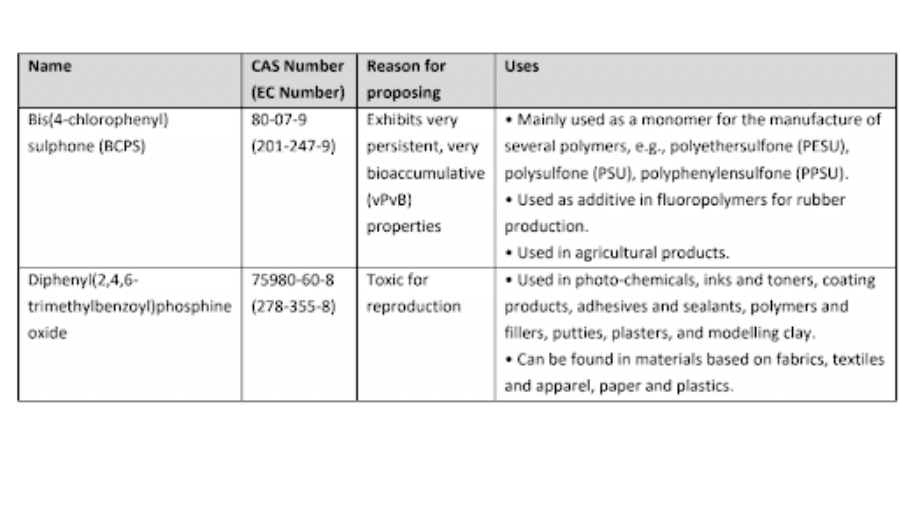
The Weekly Pulse: 20th March – 24th March

What’s HOT in our Regulatory World
What are our clients looking at?
This week’s trending sources in C2P
- Hungary: Rules for the Operation of the Extended Producer Responsibility System, Decree 80/2023
- China: Compulsory Product Certification Management for Lithium-ion Batteries and Other Products, Announcement No. 10, 2023
- EU: Framework for Ensuring a Secure and Sustainable Supply of Critical Raw Materials, Draft Regulation, March 2023
What is our Content Team talking about?
EU publishes Potential Priority Products for new EU Sustainability Products Regulation – Michelle Walsh
In March 2022, the EU Commission proposed the draft Ecodesign for Sustainable Products Regulation (ESPR). This draft regulation will repeal the existing Eco-design Framework Directive 2009/125/EC so that it can apply to the broadest range of products possible.
The proposal is that all products in the EU will be sustainable, and this will be the norm. The impact of this regulation is significant as it enables the introduction of both vertical (.ie product specific) and horizontal (.ie cross-cutting legislation applicable to numerous product groups sharing similar characteristics) sustainability measures.
The Joint Research Centre (JRC) of the EU Commission has published a draft report on the preliminary study to identify the new product priorities and horizontal measures for the implementation of specific measures under the ESPR.
The draft report looks at regulatory gaps in existing legislation as well as considering a distinction between “end-use products” and “intermediate products” (such as iron and steel).
The report short-lists 19 products (12 end-use and 7 intermediate products) based on environmental, market, and policy considerations to be examined by the EU Commission as follows:
12 Short-listed end-use products
- Textiles and Footwear
- Furniture
- Ceramic Products
- Tyres
- Detergents
- Bed Mattresses
- Lubricants
- Paints
- Cosmetics
- Toys
- Fishing Gear
- Absorbent Hygiene Products
7 Short-listed intermediate products
- Iron and Steel
- Non-Ferrous Metal Products
- Aluminum
- Chemicals
- Plastics
- Pulp and Paper
- Glass
Regarding horizontal measures, out of the measures considered, the JRC will firstly cover “durability”, “recyclability” and “post-consumer recycled content. “Lightweight design” and “sustainable sourcing” will be covered later before finalizing the ESPR working plan. It is worth noting these horizontal measures may be particularly relevant to energy-related products (ErP) not covered in this report such as electrical appliances.
Potential Horizontal Measures on Durability
- Minimum Lifetime and Labelling
- Resistance to Stress or Ageing Mechanisms (.ie drop/shock resistance, ingress protection
- Minimum durability of function (Repellence (oil/water stains), colour (fastness), dimensional changes
- Introduction of a Repairability Scoring Index/ Label
- Availability of Repair (+upgrade) information and maintenance instructions to independent operators and/or end users
- Spare part (and software upgrade) availability and delivery time
- Disassembly generally or related to Tools, Fasteners, Working Environment, and Skill Level
- Use of component and material coding standards for the identification of components and materials
- Use of standard components
- Number of materials and components used
- Modularity, transformability, detachable/ adjustable elements
Potential Horizontal Measures on Recyclability
- Ability to easily separate the product from different materials (ie metals, plastic, textile)
- Choice of materials and restriction on substance (.ie choice and combination of polymers, absence of flame retardants)
- Condition for the access to product data relevant for the recycling, including dismantling information (.ie marking of parts and materials, use of component and material coding standards for the identification of components and materials, indicative weight range of different materials, including critical raw materials (CRMs), and environmentally relevant materials, hardware and software needed for the recycling process changes)
- Introduction of a recyclability scoring index/ label
Potential Horizontal Measures on Post-Consumer Recycled Content
- Provisions on a minimum content of post-consumer recycled material expressed either as a fraction of the total material input (in %) or in absolute numbers (kg per unit, million tonnes Mt in aggregates)
What are our Knowledge Partners talking about?
European Chemicals Agency consults ahead of 29th update to SVHC Candidate List – Rina
The European Chemicals Agency is presently consulting on the potential addition of two substances to the Candidate List of Substances of Very High Concern for Authorisation (“Candidate List”).
The two substances are Bis(4-chlorophenyl) sulphone (BCPS) and Diphenyl(2,4,6-trimethyl benzoyl)phosphine oxide. They have been proposed as Candidate List additions by Austria and Sweden respectively. Supporting detail is found in the table
that follows:

The European Chemicals Agency’s consultation is a public one and will end on 3 April 2023 at 23:59 Helsinki time.
If one or both of the substances become future additions to the Candidate List, immediate obligations for suppliers of articles containing the substance(s) will apply.
Under Article 33 of the EU REACH Regulation, those who supply articles containing Substances of Very High Concern (SVHCs) in concentrations above 0.1% w/w have to provide information for recipients of the articles (e.g., distributors, retailers).
As a minimum, article producers or importers must communicate the name(s) of the substance(s) on the Candidate List that is found in their articles above 0.1% w/w. If producers or importers also have particular information about the safe use of their articles that contain one or more SVHCs, then this information must be communicated too. This information must be provided to business recipients automatically when the articles are supplied.
The communication requirement applies from the time new substances are added to the Candidate List; there is no transition period.
There is also a communication requirement relating to consumer requests for information. If faced with such a request, an article supplier must provide the names of the SVHCs found in applicable articles above 0.1% w/w as well as any particular information about safe use within 45 days.
If the two proposed substances get added to the Candidate List – and so identified as SVHCs – the total number of SVHCs will increase from 233 to 235. This would occur in either June or July 2023.
What are our clients asking about?
“Does the Turkey RoHS contain the same exemptions as EU RoHS (ie exemptions 42 and 44 of EU RoHS)?“
Answer by Joyce Costello
Yes. Türkiye has achieved a good level of preparation for EU membership in the free movement of goods, and one area of advanced progress is in the RoHS regulation. Exemptions in the new regulation are the same as those applied in the EU, including exemptions 42 and 44 of Annex 3, and there is an express commitment under Article 6 to update applications exempted from restrictions in line with changes that are made in the EU measure.
Stay Updated On Global Regulations With The Weekly Pulse
This information is based on the most viewed regulations on C2P this month.
Sign up to get the latest compliance news delivered to your inbox weekly, for free!
The Pulse – Weekly Newsletter
Get the latest compliance news delivered straight to your inbox








